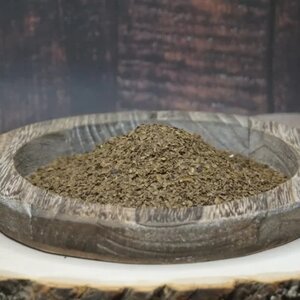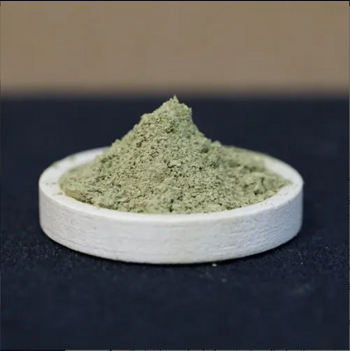Some Kratom extracts, like the resin, are not offered by vendors. If you’ve never had Kratom before, or even if you’ve loved it in the past, likely, you’ve never heard of Kratom resin. It is not as common on the market as other forms of the plant, such as powder and extract, which are more popular.
There are several factors at play here, and one place to start is by learning about the many types of products from this herb and what makes resin unique among them.

Various Kinds of Kratom Products
Its several variants have gained significant popularity. There are a few unique products that can often be obtained on the market from reputable merchants, and these products are as follows:
- Kratom powder
- Extracts from Kratom leaves
- Kratom pills or capsules
These are some of the most popular ways to buy it today. Today we are going to have a look at one of those techniques, which is the Kratom resin. While its resin is similar to extract or concentrate, there are important distinctions.
The Origin of Kratom Resin
Kratom resin is a solid extract of Mitragyna Speciosa that is created by concentrating its powder into a liquid-based product and then letting the liquid evaporate when the concentration process is completed.
Some people may refer to the leftover hard, sticky substance as candy. Because of its high concentration level, Kratom resin is often a very dark brown or black.
Compared to Mitragyna powder, the alkaloid content in Kratom resin is much higher. It is boiled down to its most concentrated alkaloid form, which is why it has such high potency. Kratom resin has the potential to be up to 15 times more potent than other types of herbal products and extracts.
Creating Your Resin
Remember that these are just general guidelines if you’re interested in learning to create Kratom resin on your own. They are an overview of the procedure that will give you an idea of the effort required. Because the total amount of alkaloid in the finished Kratom resin might be hard to detect, making your resin can be dangerous; thus, you should continue with extreme care.
The process for creating resin consists of the following steps:
- Kratom leaves or their powder should be boiled in water and let to steep for a significant amount before consumption.
- Remove any plant waste, as well as entire leaves, from the mixture.
- Keep boiling until there is very little liquid left in the tea.
- After spreading the mixture, please wait a few days for it to cure and harden properly.
- The resin is usually processed and eaten, and broken into smaller pieces.
Instructions for Using Kratom Resin
The adaptability of Kratom resin is one of its most compelling selling factors. There are several different methods to consume it, such as eating with juice in capsule form or combining it with your preferred hot beverage.
It dissolves completely when heated in liquids like coffee or tea. In addition, there is no need to heat or prepare resin-infused drinks since the alkaloids in resin have already been “activated” by heat. One further advantage of using resin is that it makes the process of preparing it much easier.
Kratom Resin for Personal Use
Because it is so difficult to get pure Kratom resin, many curious individuals turn to home-brewing their own. Although it is possible to make your resin, you should do it with caution.
The procedure is not very complicated. You may get a highly concentrated tea by boiling this herb, letting the solution soak for a long period, freezing it, and then thawing it in hot water. This will enable you to filter away the plant matter, leaving behind just the tea.
After that, the tea is spread out and let to dry out, turning it into a resin. Although the process takes a long time, a large quantity of resin may be made all at once.
Making this resin at home has several challenges, the most significant of which is the inability to predict the final concentration of the product accurately. It is often labeled according to the number of grams used to generate one gram of Kratom resin (e.g., 8x resin used 8 grams to create 1 gram of resin), although this is not a precise measurement.
Things To Consider Regarding Safety
When you search for Kratom resin on the internet, you will likely come across many conflicting opinions on whether or not it is a smart idea to take this special extract.
Tolerance Risk
Tolerance is one reason it can be bad to take too much Kratom resin too often. Given the correct circumstances, this herb may develop tolerance and provide such a condition.
Because the concentration of this resin is so much greater, users who often use resin may find that traditional delivery methods, such as Kratom powder, no longer work for them.
Maintaining your regular schedule is essential, even if you change how the distribution is handled. When first using this herbal resin, slowly and gradually increasing your dosage is wise.
Challenges With Concentration
A further issue with resin is that the concentration is not always made clear, making it difficult to choose the appropriate product or pick the right quantity.
Since there is greater variety in the extraction process, there is also more diversity in the end product compared to other herbal types. Because of this, many good companies don’t make or sell resin products.
Ending Remarks
Learning more about plant-based medicines is the most effective strategy to minimize any safety concerns associated with using that substance. We ensure that our materials are always up to date by including the most recent findings and news coverage on Kratom.
Visit our blog regularly to continue your learning on this herb, and don’t hesitate to contact us anytime. We are proud to be contributing members of this community and always do our best work.

Frequently Asked Questions
What Is Kratom Resin?
There are three main forms of Mitragyna extract, the most popular of which is Kratom resin. This herbal resin appears as a thick, dense, somewhat sticky solid material, unlike other forms of Mitragyna Speciosa.
How Should The Concentration Of Kratom Resin Be Measured?
It’s hard to assess this herbal resin’s strength. Because it is so easy to make at home, Kratom resin is rarely submitted for proper scientific analysis. On the other hand, the resin is often quantified according to its concentration, with labels such as “8x Kratom resin,” “20x resin,” etc.


Latest from our blog
Please Read….This is Urgent
In loving memory of Ryan, a special individual who recently passed away, we honor his [...]
Damiana Exposed: Special Look At Turnera diffusa (2023)
Damiana Exposed: Special Look At Turnera diffusa (2023) Damiana is a wild shrub native to [...]
Kanna: A New Look At An Exciting Mood Booster (2023)
What is kanna? Some say the botanical has similar effects to MDMA, or ecstasy. Others [...]
Blue Lotus Flower: Unveiling Its Mystical & Therapeutic Powers
To cut to the chase and pickup potent 25x blue lotus extract today while enjoying [...]
Red Bubble Kratom Extraction: A Comprehensive Guide
As a kratom enthusiast, have you ever wondered if there was a method for getting [...]
Aug
Maeng Da Kratom 101: Accurate Info You Can Trust
Maeng Da kratom may be the most popular kratom strain on the market today. The [...]
Aug